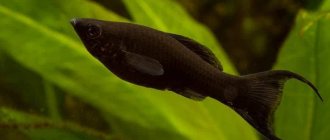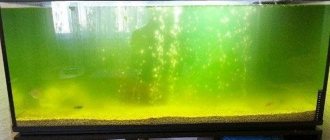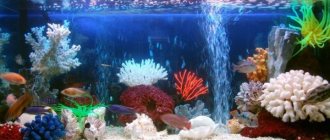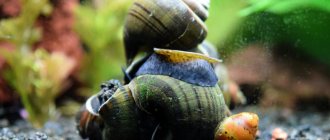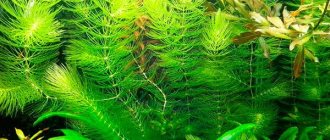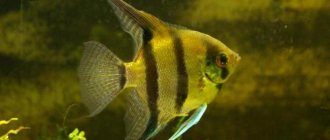Changing the water in the aquarium is a must to maintain healthy fish. The frequency of the procedure depends on the degree of biological balance established within the transparent reservoir. According to this classification, an aquarium can be new (immediately after launch), young (2-6 months), mature (6-12 months) and old (1 year or more). The approach to replacing water in each case has its own characteristics.
Equipment and supplies for changing water in an aquarium
Before changing the water, it is necessary to determine the type of artificial reservoir by capacity. A home aquarium can be large or small. The first category includes tanks exceeding 200 liters. The second ones include those whose volumes are 50, 100, 120, 150, etc. You can replace fluid in small ones only if you have the following equipment:
- 10-12 liter plastic buckets;
- rubber hose 1-1.5 m long;
- faucet (ball valve recommended);
- siphon with pear.
For the procedure in a large aquarium, it is necessary to increase the length of the rubber hose so that it can reach the sewer drain. You can use a fitting that will provide connection to the tap and fill with fresh water. For aquariums over 1000 tons, a stationary water supply and drainage system is installed.
It is recommended to find a bucket with a spout - this design will ensure a comfortable supply of liquid without loss. The use of a siphon is explained by the need to clean the soil. It is a cylinder connected to a hose. We accept both a homemade version and one purchased at a pet store. The bulb displaces air from the hose, which is important when filling the tank with water.
100 liter aquarium: general recommendations
How often do you need to change the water in a 100 liter aquarium? Such containers for keeping fish are considered the most suitable for their permanent residence. In addition, they are much easier to care for. This is due to the fact that, as a rule, up to 20% of the total volume of water changes, and with large volumes it becomes polluted much more slowly. In principle, 100 liters is not such a large volume of an aquarium. It is considered minimal for comfortable keeping of fish. The same principles apply to a partial water change as for a 50-liter aquarium.
Water replacement rules
Replacing dirty water in a fish aquarium is possible only after cleaning it, otherwise the procedure does not make any sense. Replacement too early has a negative impact on the emerging habitat, so you should wait at least 2 months after installation.
Before starting work, a set of measures must be completed:
- clean decorative elements and installed equipment along with the filter from debris;
- remove plaque from the walls of the aquarium;
- get rid of dead algae and food;
- engage in thinning and pruning of plants;
- perform a soil siphon.
In order to maintain optimal water biobalance, no more than 20-50% of the volume of liquid in the aquarium should be renewed. The use of water without a significant difference in hardness from the original will help maintain the normal external condition of the algae. If it is excessively soft, the use of mineral additives may be required.
Adding water supply that has not been settled puts the health and life of the fish at risk. It's all about dangerous chemical compounds and a large amount of chlorine and oxygen bubbles. When they enter the bloodstream, they provoke blockage of blood vessels, which results in impaired swimming, body tremors and death.
Thanks to settling, all excess will be localized at the bottom of the container, so the likelihood of undesirable developments is eliminated. River, bottled and lake water are alternatives to tap water. In this case, heating to +80 ºC is required. The composition of rainwater precludes its use in aquariums.
The duration of the settling procedure is determined by the proportion of hazardous impurities. The number of days ranges from 1 to 14. The use of fresh water is not prohibited only if chlorination is abandoned.
It is important that the dishes used do not have a narrow neck (jars are excluded), which reduces the rate of disposal of excess oxygen. It is best to stand in a plastic bucket with a gauze rag on top, which will protect against foreign elements. For large volumes, the way out of the situation is to purchase construction containers.
Devices for additional filtration are relevant in cases where the aquarium is densely populated or large. A filter for small tanks can be considered beneficial bacteria that eliminate turbidity.
Clean and new aquarium
10 liter aquarium: general points
Question: how often do you need to change the water in a 10 liter aquarium? It depends on how populated it is. If there is a filter, then the water can be replaced once or twice a week, replacing about a fifth of the total volume of water, that is, about two liters. Keep in mind that due to the small volumes of the aquarium, even minimal fluid changes are much more difficult for the inhabitants to tolerate than in larger aquariums. This is due to the fact that there is so little water that even a glass can significantly change the established ecosystem.
But most often, such small containers are not intended for permanent keeping of fish; they usually serve as a depository for fry, and a filter is not installed in them. Then you need to judge how often you need to change the water in a 10-liter aquarium without a filter in a slightly different way. If you keep fry in it, you should see that the water in it is practically not polluted. Accordingly, you can safely keep them in this water, without changing it, until the moment when they grow up and can be transplanted into the main aquarium.
Launch of a new aquarium
Once all the equipment is correctly installed in the new aquarium and liquid is added, the process of forming an aquatic environment will gradually begin. Don’t be afraid of muddy water and solve the issue with partial or complete replacement. The adjustment of transparency is natural and is explained by the activity of simple bacteria increasing their numbers.
If the situation gets out of control, you can solve it by catching all the inhabitants of the aquarium and temporarily placing them in another container with similar environmental parameters. Next, the automatic filter-aerator is turned on in the source tank and cooling to + 25 ºC on the thermostat. When the lighting is turned off, the speed of the process increases significantly. A week of waiting is enough.
On the tenth day it is allowed to return the lighting to 9-10 hours. It is necessary to clean the filter component in warm tap water without using soap. After the aquatic environment becomes completely transparent, you need to wait 1-2 days and you can place the fish in the aquarium. It is best to postpone feeding for a day, since exposure to an unstable environment can return the problem.
Timely installation of a compressor in small tanks helps prevent the water from becoming cloudy, since the device works to mix the layers. For large aquariums, pumps are provided.
20 liter aquarium: general recommendations
In principle, we answered this question already in the previous paragraph, because a 20-liter aquarium is also considered very small for the constant keeping of fish.
The only thing that can be given more attention is the problem of how often you need to change the water in a 20 liter aquarium with a filter. Let's first determine how the internal filter works and what it is needed for. Typically, small aquarium filters draw water into themselves using a small pump and pass it through a filter material - usually foam rubber. The liquid, passing through the foam rubber, leaves all the impurities in it and, under pressure, is thrown into the aquarium by the same pump.
Based on this, it becomes clear that the amount of water that can be filtered is limited by the size of the filter material. But in a small aquarium it is simply not possible to install a large filter; accordingly, the device will clog very quickly, and the water will have to be changed again. From all of the above, it becomes clear that small-volume aquariums are practically unsuitable for permanent keeping of fish, regardless of whether there is a filter in it or not.
Complete change of water in the aquarium
It is allowed to completely change the fluid only in the following cases:
- diseases of plants and fish (semolina, dactylogyrosis, dropsy and others);
- protrusion of fungal mucus on decorative elements and tank walls;
- violation of the structure of the soil substrate;
- blooming water or continuous cloudiness.
The risk of the procedure is that with a complete replacement, plants and fish find themselves in an unusual environment, which can negatively affect their health. This leads to stress in living beings, since a number of indicators of the new environment do not correspond to the usual ones. Cockerels, guppies, goldfish, cichlids, zebrafish and other ornamental species have difficulty jigging into a sump and creating a system entirely from scratch.
Partial water change
Thanks to a partial change of water, the level of nitrates, which are waste products, is reduced. Even if old fish are accustomed to a high content of nitric acid salts, the fry are unable to adapt to stressful conditions and quickly die.
A change of 20-25% of the liquid is necessary to stabilize the pH value. The fact is that in old water the proportion of minerals that inhibit the constant increase in acidity is extremely small. Destabilization of pH negatively affects the condition of all aquarium animals, regardless of age, including red-eared turtles.
With partial renewal, regularity is in the foreground, and not the share of new water in the total amount. This is especially true in the case of aquariums without a lid of 150 liters or more, the design of which involves accelerated evaporation of clean water with a similar accumulation of harmful substances.
In case of replacement of 50% or higher, the indicators change dramatically:
- rigidity;
- pH;
- temperature.
It is best to add 20% for 1 month. You can divide the procedure into 2 stages, changing no more than 10% at a time.
The resulting changes in the ecosystem are not a crisis; the balance is restored within 1-2 days. The decorations are washed using the same water in which they were previously washed. This helps preserve beneficial bacteria. If the tank is dirty, it is possible to add fresh water with medications to treat the fish.
Siphonim soil
It is better to change part of the aquarium water by siphoning the soil. Soil siphoning is a unique process that involves cleaning the soil and removing debris mechanically. To do this, you need a special siphon for aquariums or a regular rubber hose. We place the container into which we will drain the “waste” water below the level of the aquarium. According to the laws of physics, water will flow without problems.
You cannot siphon the soil for the first 2 or 3 months from the start of the aquarium. So that all the necessary formations have time to form in it and so that all the necessary bacteria are populated. This organizes a stable state of biological balance in the aquarium. Yes, here’s another thing: since the plants in the aquarium use “garbage” and fish waste, so to speak, in their own interests, the difference in time intervals for siphoning soil in an aquarium with and without living plants is simply gigantic. Plants provide you with the opportunity not to clean the soil using this procedure for six months or even a year. But if there are only artificial plants in the aquarium, then the siphon will have to be taken out every 2 weeks, or even every 7 or 10 days.
In such an aquarium, the soil often siphons. Siphoning the soil occurs like this: run the hose 2-3 centimeters from the bottom over the entire area of the aquarium. This process is not difficult, but requires patience and care. Be careful not to snag the plant. If a fairly large number of plants live in the aquarium, you will have to siphon the soil less often. However, at the same time, the aquarium water should be freed from additional load in the form of debris - dead plant particles, fish corpses, and everything else. As the water in the aquarium decreases, it must be added to the required level. Especially on hot days when it evaporates very quickly. But be careful! This is not considered a full replacement with fresh water.
Launch of a new aquarium.
Surprisingly, even when starting a new aquarium, it may be necessary to change the water. This is rare, because if the aquarium is started correctly, the first replacement is made on the 30-40th day after starting the aquarium. In most “new” aquariums, the water becomes “dirty” almost after starting up. Yes, and New Tank Syndrome may occur. Although in this case the word “dirty” does not mean cloudy or containing a lot of “garbage”. You can read the article about starting an aquarium for the first month. In nature, the bottom is formed from the substrate. Here aquatic plants not only take root, but also from here they consume nutrient reserves, due to which they grow. The same substrate is home to many microorganisms that decompose nutrients. Due to this, they become convenient for “digestion” by the aquatic plants themselves. That's the process. But when starting a new aquarium, this process has not yet been established. The water receives nutrients intended for the root system of plants. They can oversaturate the aquarium environment. Changing the water solves this problem.
Frequency of water changes
When it comes to the frequency of water changes, the key parameter is the time that has passed since the start. After 2 months, the biological system will be at a level that allows adjustments. Replacement is made taking into account the stage of its development. Experts recommend adhering to the following rules.
| Ecosystem type | How to perform the operation |
| New | Impact is excluded, as it harms the microclimate. It is allowed to renew the water only after 2 months. |
| Young | Replacement once every 30 days. No more than 20% of the fluid changes. |
| Mature | Replacement once a month. 20-25% of the fluid is changed. |
| Old | Replacement once every 15 days. No more than 25% of the fluid changes. |
In emergency situations requiring replacement of at least half of the total volume, the procedure is performed 2-3 times within 7 days. No more than 25% can be renewed at a time, which will save some of the beneficial microorganisms living in the sand.
For large aquariums, it is considered correct to increase the proportion of new water. For example, in a 240 liter tank you can change up to 30% per month.
Changing water in a saltwater aquarium
The rules for caring for a seawater tank differ from the standard ones. In order to maintain order, it is necessary to mix salt water with distilled liquid or that has undergone a reverse osmosis procedure using membranes that capture harmful compounds.
It is allowed to update the water no more than once a month. If increased levels of contamination are observed, the procedure can be performed twice. The difference with freshwater aquariums is that even partial renewal requires settling and filling a larger volume - about 25% needs to be changed at a time.
50 liter aquarium: general points
How often do you need to change the water in a 50 liter aquarium? First of all, it depends on how many inhabitants there are and what type they are. Probably everyone knows that some fish produce more waste and pollute the water more often, while with others it’s the opposite. In principle, the liquid in such containers can be changed once every 10–14 days, depending on the degree of contamination. The same can be said about how often you need to change the water in a 50-liter aquarium with a filter - usually no more than once every ten days. And if you put a cleaner in it, for example, an ancistrus catfish or, as it is also called, a sucker catfish, then you can not change the water for 2-3 weeks.

